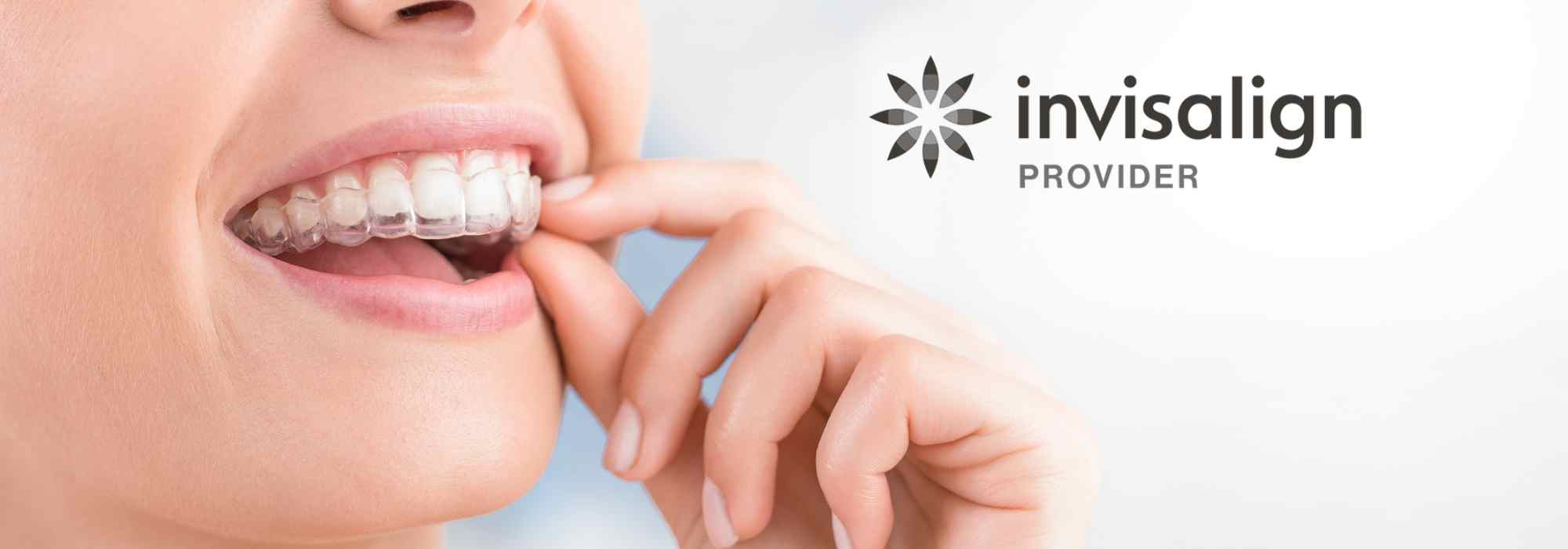

Temporomandibular joint (TMJ) disorders and bruxism (teeth grinding) are common dental issues that cause significant discomfort, including jaw pain, headaches, tooth damage, and difficulty eating or speaking. Both conditions often stem from misalignment of the teeth or jaw, which places strain on the TMJ and leads to additional oral health problems. Invisalign can be a treatment option for TMJ disorders and bruxism that stem from malocclusion.
TMJ refers to problems affecting the jaw joint and muscles responsible for jaw movement. It can lead to pain and discomfort in the jaw and surrounding areas, making everyday activities like chewing and speaking difficult. Symptoms of TMJ disorder include:
Common causes of TMJ include jaw injury, arthritis, teeth grinding (bruxism), or misalignment of the teeth or jaw.
Invisalign treatment involves wearing a series of clear, removable aligners that gradually move the teeth into their proper positions. By realigning the teeth, Invisalign can help alleviate TMJ symptoms in several ways:
In addition to treating TMJ symptoms, Invisalign offers a dual benefit by addressing the misalignment that contributes to bruxism. As bruxism is a common cause of TMJ, reducing grinding can help improve both conditions.
If you have TMJ and are considering Invisalign treatment, it's essential to consult with an experienced dentist in treating both TMJ disorders and orthodontic needs. Your dentist will assess your condition and determine if Invisalign is suitable for you. In some cases, additional treatments or modifications may be needed alongside Invisalign to address TMJ symptoms.
In addition to Invisalign, there are other treatment options that can help manage and alleviate TMJ symptoms:
Invisalign treatment begins with a consultation where your dentist will assess your bite, jaw function, and the extent of your TMJ or bruxism symptoms. A personalized treatment plan will be created using 3D imaging to design custom aligners that will address both misalignment and TMJ discomfort.
Aligners are typically worn 22 hours a day and replaced every two weeks. As treatment progresses, many patients have reported a reduction in pain and discomfort while enjoying a more balanced bite. Treatment usually lasts from 12 to 24 months, depending on the severity of your condition.
If you have TMJ and are considering Invisalign, keep these tips in mind:
Invisalign offers an effective, modern solution for managing TMJ disorders and bruxism while improving your smile. By realigning your teeth and reducing strain on the jaw joint, many patients have reported a reduction in pain and discomfort.
Book a consultation today to determine if Invisalign is a suitable treatment option for you.
Disclaimer: Invisalign may be a suitable treatment option for TMJ issues that are caused by malocclusion (a bad bite). However, TMJ disorders have varied causes and can improve with other treatments, or even no treatment. This content is not a substitute for professional medical and dental advice. Always consult a qualified healthcare professional for a diagnosis and to determine if you are a suitable candidate for any treatment. Dr. Taha Chersa is a general dentist.